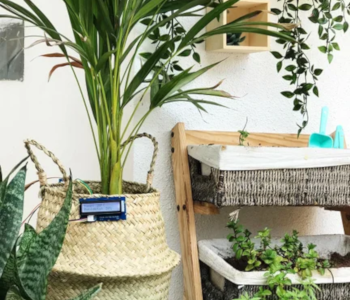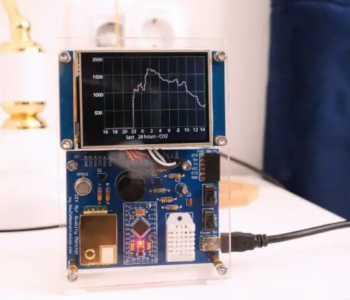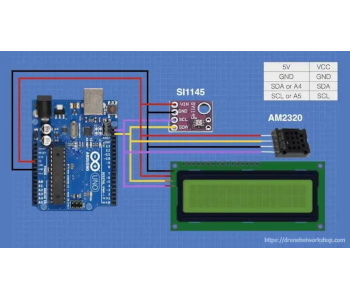An Arduino computer is a great starting point for a huge number of DIY projects. We have highlighted several of these in the past, typically in the form of “robot kits” that provide all the hardware components that need to be assembled and coded. An Arduino computer is also a very engaging tool to learn about coding.
Arduino projects are useful, but you rarely see them used outdoors. This is a massive disservice to the potential of these mini-computers. Check out this list of outdoor projects using Arduino technology!
1. Smart garden

Taking care of plants may not seem like hard work, but it is certainly challenging enough for many of us to fail to do it nonetheless. While a simple Arduino project is not quite smart enough to take care of a plant for you, it can be massively useful in letting you know what a plant needs.
This Arduino-based Smart Garden project uses humidity, temperature, and moisture sensors to keep track of the health of any single plant in your garden. You will then connect these to an Arduino board and monitor the data through Adafruit.
The data feeds can then be monitored on your phone. You can even set up the system to send push notifications if any of the parameters go below threshold values. This is a great way to keep reminded of when you need to water your plants, or if it’s too hot outside for them.
2. Air quality monitor

Have you ever wondered how healthy the air is inside or outside your home? This Arduino-based Air Quality Monitor can be useful for tracking several air quality parameters in both indoor and outdoor spaces. The assembled device is compact enough to be considered portable, so you can take it with you for long walks or even on out-of-town trips.
The device uses four sensors – a particulate matter sensor, a CO2 concentration sensor, sensors for volatile organic compounds (VOCs) and ozone, and a temperature and humidity sensor. They all work in different ways and are fairly sophisticated, so make sure that you get them from trusted sellers.
The biggest challenge of this build is making a custom PCB that will hold all the components for the assembled device. You will likely need to design the PCB yourself and have the actual manufacturing outsourced. If you want to bring the device outdoors, you will also want to design a robust enclosure for it.
3. Sun-tracking solar panel
![]()
Lots of industrial and commercial facilities and households nowadays already rely largely on solar power. Renewable energy is definitely the way to go, and you can participate in this revolution in your own small way with this Arduino project.
The Sun-Tracking Solar Panel uses two Light Dependent Resistors (LDRs) to detect variations in the intensity of light depending on the position of the sun. This information is then used to alter the orientation of the solar panel by the movement of a servo motor.
A major step in this project is the construction of the frame and stand that will support the solar panel. The complexity of this greatly depends on the size of the solar panel that you will be using.
The system requires some calibration, but the code is quite straightforward. It uses the difference in light intensity for east-facing and west-facing LDRs to determine the optimal orientation of the solar panel and maximize solar energy absorption.
This simple Arduino project simulates how large solar arrays work. It provides good insight into automated systems in large-scale settings.
4. UV meter

UV exposure is a major hazard if you spend lots of time outdoors. Although sunlight is healthy in small doses, too much UV exposure can cause skin issues and even long-term and serious health conditions. This quick Arduino project is a great way to quantify just how much UV your body receives when spending time outdoors.
The Arduino UV Index Meter uses a simple analog UV light sensor module to detect the intensity of UV light. Depending on UV intensity, the sensor outputs a different voltage. This can then be processed by the Arduino as a UV index number. The project also proposes an optional temperature and humidity sensor to create a more comprehensive tool for measuring outdoor conditions.
If you’re planning to spend a few hours outdoors, the portable Arduino UV Index Meter can be useful for making sure that you are not overexposed to harmful UV rays.
5. Arduino GPS Tracker
![]()
There are so many situations where a GPS Tracker can come in handy. You can put one in your car for remote tracking, have your kids carry one for their safety, and just have one in your gear during a hiking trip. Commercially available GPS trackers are already quite common, but where’s the fun in that? With some parts, you can build your own Arduino GPS Tracker.
To build this project, you will need a GPS module, an SD card reader for data storage, and a LiPo battery. Make sure to get a GPS module that is compatible with Arduino and provides the code for its use. The GPS module can automatically save GPS data on the SD card for later retrieval.
The project page also provides ways to visualize GPS data using QGIS and Python. This is a good way to integrate your recorded GPS data with a more accessible platform such as Google Earth or Google Maps. With Python, you can also create a quiver plot that shows the direction of movement and speed for every data point recorded by the GPS.
Final thoughts
DIY Arduino projects provide good ways to learn basic and advanced concepts in electronics and coding. Arduino kits and compatible parts are also fairly inexpensive. With so many Arduino projects out there, you are bound to find one that is right up your alley.
The Arduino projects we have highlighted here are those that have practical uses in outdoor settings. They are not just fun to build, but can actually be relevant for research, self-care, or industrial uses.
The post 5 Arduino Projects for Outdoor Applications appeared first on 3D Insider.







Leave a Comment